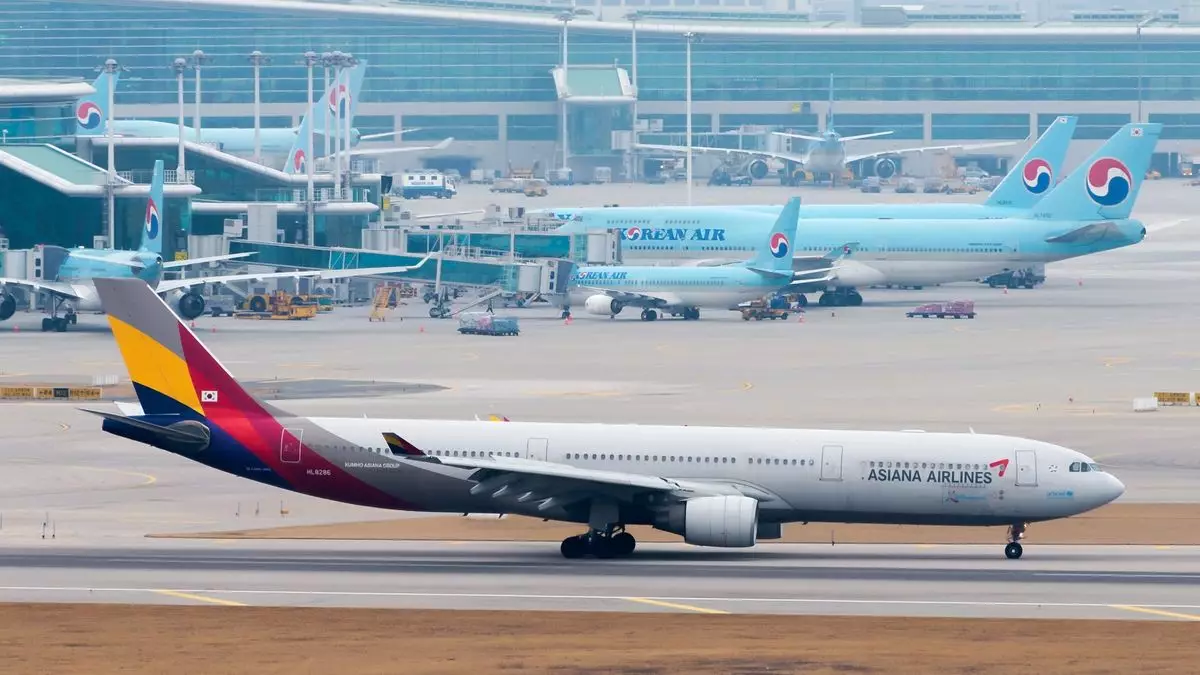In a significant shift within the aviation industry, Korean Air has finalized its acquisition of Asiana Airlines, marking a transformative event in South Korean aviation dynamics. This substantial $1.3 billion deal grants Korean Air a commanding 64% stake in Asiana Airlines, which previously held the title of the nation’s second-largest carrier. The strategic agreement, which initially took shape amid the tumult of the COVID-19 pandemic four years ago, now positions Korean Air as a pivotal player not only in South Korea but also on the global aviation stage.
The merger has propelled Korean Air from the 22nd largest airline to the 11th position in global rankings, a remarkable leap that highlights the competitive advantages gained through this consolidation. According to analysis by the CAPA Centre of Aviation, this advancement is particularly noteworthy as Asiana Airlines previously occupied the 40th spot on the same list. The merger amalgamates resources and routes, thereby enhancing operational efficiency and market reach.
With the completion of this merger, the Korean Air Group now commands an impressive 47% share of the international airline market in South Korea. This substantial market presence encompasses not only Korean Air and Asiana but also their affiliated low-cost carriers, Jin Air, Air Busan, and Air Seoul. In an interesting twist, the merged entity plans to integrate Air Busan and Air Seoul into Jin Air, thus streamlining operations under the single brand.
Despite the consolidation, the Asiana brand will maintain its identity and continue to operate flights as Korean Air embarks on a two-year plan to effectively merge the two airlines’ operations. This gradual integration is designed to ensure that the strengths of both airlines are maintained, allowing for a smoother transition for both passengers and employees alike. As the transition unfolds, travelers can expect a more robust network of services and better connectivity across destinations.
The successful closing of the acquisition was contingent upon approval from various global regulatory authorities. Notably, the European Commission endorsed the deal just two weeks before the transaction was completed. Regulatory bodies in Japan, China, and several other nations had previously given their nod of approval. However, the U.S. Department of Justice has yet to issue a verdict. Korean Air’s confidence in closing the acquisition, despite this pending approval, suggests that they anticipate receiving favorable outcomes.
In a move likely designed to ensure healthy competition in trans-Pacific routes, regulators imposed certain concessions on Korean Air. One such stipulation required the leasing of four Boeing 787s to Air Premia—a relatively new entrant in the South Korean market. This initiative underscores a commitment to maintaining competition, particularly on routes between South Korea and the United States. In a competitive environment where both Korean Air and Asiana serve multiple U.S. destinations, the future of trans-Pacific aviation appears to be evolving.
As Korean Air and Asiana Airlines embark on this new chapter, both the airline industry and travelers will be closely monitoring their progress towards integration and market adaptation. This merger not only reshapes the landscape of South Korean aviation but also speaks volumes about the enduring resilience and adaptability of the airline industry in the face of global challenges.


Napsat komentář